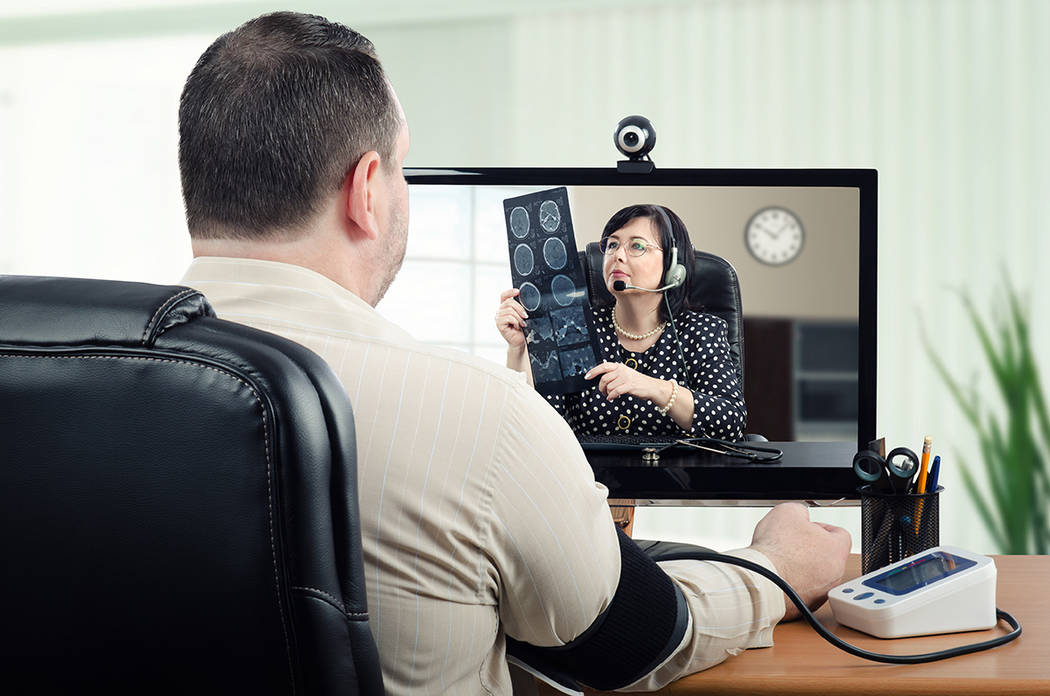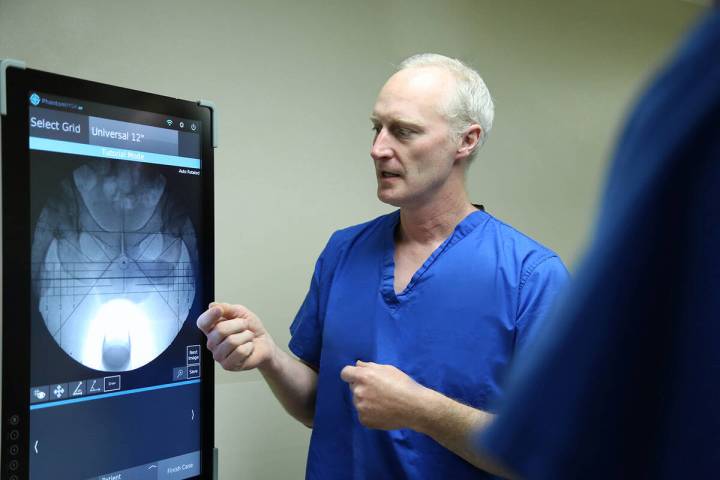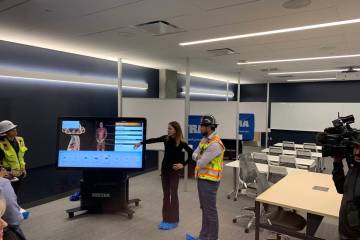
Whether it’s with the use of a mouse to conference via Skype or over an iPhone, patients are turning to telemedicine in greater numbers to get the care they need when they can’t get in to see the doctor.
Doctors in solo or small practices may be slower to adopt the new technology than large medical groups, but it’s a growing trend in medicine no one is ignoring.
That made it fitting for the Clark County Medical Society on April 1 to host a conference on telemedicine to educate physicians and medical students on a future wave in the profession.
“Telemedicine is a field that’s burgeoning and transforming health care,” said program moderator Thomas Hunt, professor and chairman of the Department of Family Medicine at Roseman University of Health Sciences. “I’m seeing it all the time. Even the Clark County School District is using telemedicine to reach out to students who otherwise may not have access to health care.”
The movement is being led not only by patients but health plans that see it as a lower-cost option than people going to emergency rooms or urgent care. The cost for patients is similar to whatever their office co-payment is.
“Health plans see this as a way to distinguish themselves,” said Dr. Wallace Adamson, staff vice president for Anthem’s LiveHealth Online program. “Consumers love it, it improves access, and it’s very affordable. All of the national payers have some type of relationship with telehealth.”
Adamson said that wasn’t always the case as some medical directors of health plans thought it would be misused and increase costs. Instead, it cuts down on people going to urgent care or emergency rooms or not getting treatment at all which can worsen a patient’s condition. National employers have demanded it be included in their health plans, further enhancing its expansion, he said.
“People thought this would just be adding to the cost of the health care system, but we found that not to be true,” Adamson said. “There are no increased visits with telehealth, and there’s nothing added to what the system’s bearing today.”
Adamson said the cost of telemedicine runs about $50, and it saves about $200 in health care costs that would have otherwise gone into an emergency room, urgent care or other facilities.
“That’s fairly attractive for patients and, from a consumer prospective, everybody has high deductibles right now,” Adamson said.
A majority of the patients use telemedicine to treat upper respiratory issues, colds, sore throats, bronchitis, bladder infections, allergies and rashes. It’s also used for refilling prescriptions, for example, if a patient’s blood pressure medicine is about to run out before he can go to the doctor.
A lot of patients interested in telemedicine ask if their doctors are using it, Adamson said. That’s going to put the onus on more to adopt the technology because while people like their doctor they don’t want to wait three hours at their office for a last-minute appointment.
“Most folks don’t know it’s an option yet, but when they do find out they’re fans,” Adamson said.
There are some physicians who feel as if they’re busy enough and don’t want to use the technology while others are worried about their reimbursement, Adamson said.
Health systems, meanwhile, are being aggressive in pursuing the digital health strategy as a way to increase their outreach to the community. Others have taken a defensive approach that if they don’t pursue the strategy, others will and they’ll lose out, Adamson said.
It has a lot of promise to branch out, for example, with primary care doctors using telemedicine to consult with orthopedic surgeons about a patient’s hip pain or knee pain, Adamson said.
Everyone agrees that behavioral health will be the next big advance of telemedicine given the limited number of psychologists and psychiatrists, according to Nevada Assemblyman James Oscarson who shepherded through Assembly Bill 292 pushed by Gov. Brian Sandoval in the 2015 session. The bill set the legal framework for telemedicine in Nevada and is being eyed by other states as a model.
Oscarson, a former nurse and director of business development at Desert View Hospital in Pahrump, said the legislation has been a success and shows the importance of doctors, insurers and other parties coming together to understand and get behind the legislation. One key of the bill was ensuring doctors have a valid Nevada license to prevent doctors from other states from making diagnoses and writing prescriptions.
“I always envisioned this as a rural health care bill because of the limitations we have in those areas,” Oscarson said. “There are so many gaps in the services the rurals have. It has also helped in urban areas to have access to specialists and others that make a difference in care.”
There’s a lot more on the horizon, Oscarson said. The UNLV School of Medicine will have a telehealth center and network and medical students will have that training. Telemedicine will play an important role at UMC, he said.
Oscarson told doctors that telemedicine is an important resource for them and “another tool in your toolbox” to take care of patients. When Southern Nevada has a shortage of doctors in various specialties, it helps fill a gap, he said.
“I don’t want you to think telemedicine is a silver bullet,” Oscarson said. “It may not be appropriate in all settings or for all conditions. There are still patients that want hands-on care and walk in and see their doctor and have them listen to their heart, look in their ears and look down their throat.”
Not all doctors like telemedicine but Oscarson said they need to look at it through the eyes of the patients, especially those in rural communities that lack access to care. It’s a challenge for an elderly person to travel three hours to a doctor and three hours back home because they have a sore throat.
“There are physicians that still hate this technology and don’t care for it,” Oscarson said. “If you see your patients that are truly sick for the first half of the day and follow it up with telehealth, it’s a great system.”






